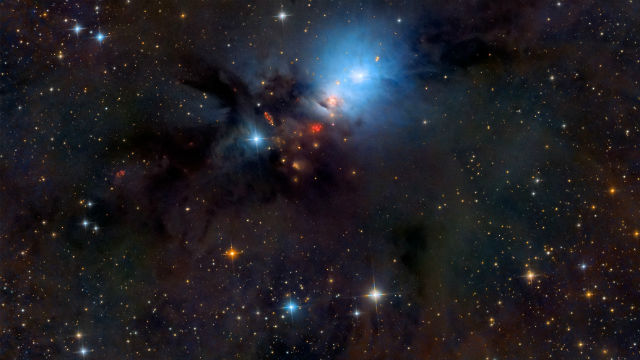Throwback Thursday: Incredible Star Trails
From Earth and beyond, these time lapses show our one-of-a-kind motion through the Universe.
“Building one space station for everyone was and is insane: we should have built a dozen.” -Larry Niven
Here on the solid ground of the Earth, the Sun and Moon rise and set on a daily basis. During the hours where the Sun is invisible, blocked by the solid Earth, the stars twirl overhead in the great canopy of the night sky.
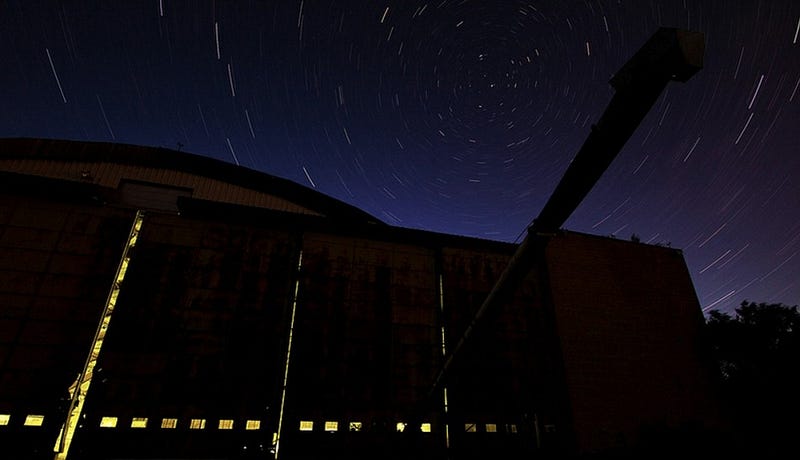
In the northern hemisphere, they appear to rotate around the North Star, while in the southern hemisphere, the stars appear to rotate about the South Celestial Pole. The longer you observe — or for photography, the longer you leave your camera’s shutter open — the longer and more spectacular are the paths that the stars trace out.
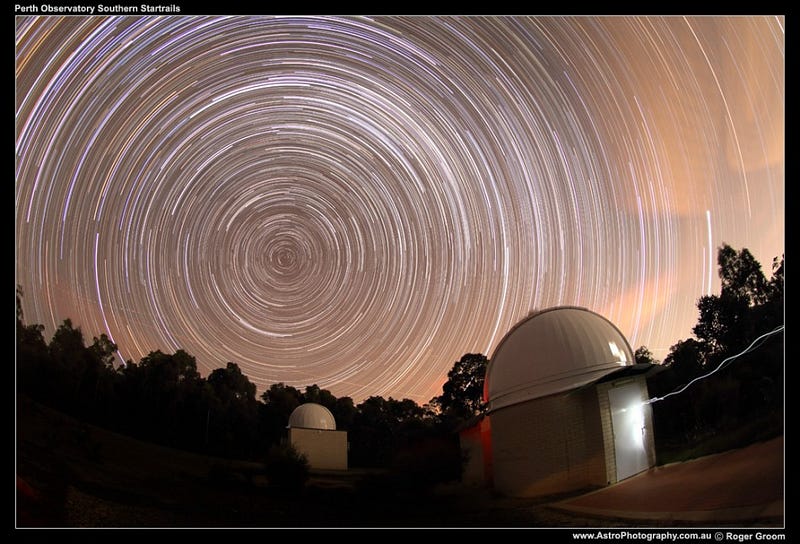
What’s the reason behind this? It’s because the Earth rotates on its axis. The North and South Celestial Poles are aligned with that axis, and so the stars appear to, with a 24-hour period, rotate about that same axis. In fact, if you were located in a place that had clear skies 24 consecutive hours of night (like the north pole today), you could even get a complete, closed circle to your trails.

That’s never (yet) been accomplished, although a wonderful attempt to ad hoc such a photo was attempted by Earl Moser, above, who had his tripod rotate an additional 180° during 12 hours of nighttime exposure. The non-circularity of the trails is due to the slight misalignment of his tripod with the north celestial pole, which he missed by a tiny fraction of a degree!
But perhaps, you might think, you wouldn’t suffer those same trails from outer space. Not being bound to the surface of the Earth, the stars would appear to be stationary, while the Earth beneath you would be the only thing that rotated. Where would you go to look and test this?
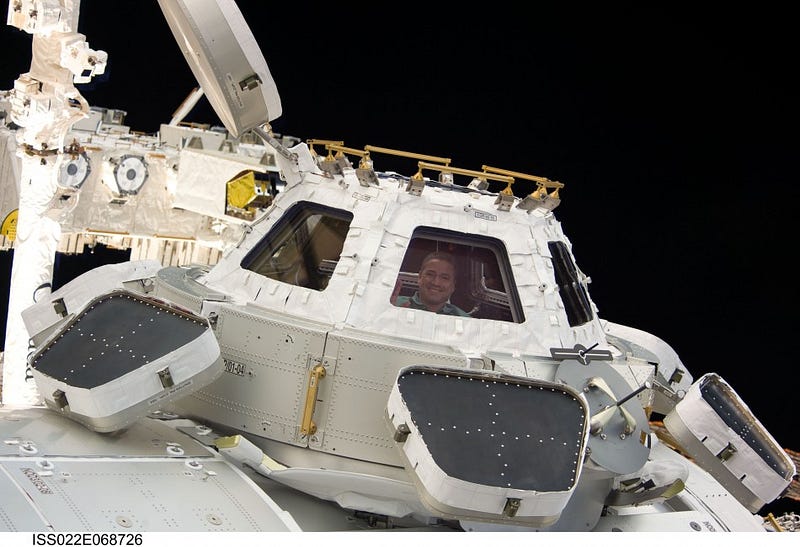
To the International Space Station, of course! The relatively new cupola, shown from the outside (above) and the inside (below), allows ISS astronauts to get a prime view of Earth and the 360° horizon, all at once.
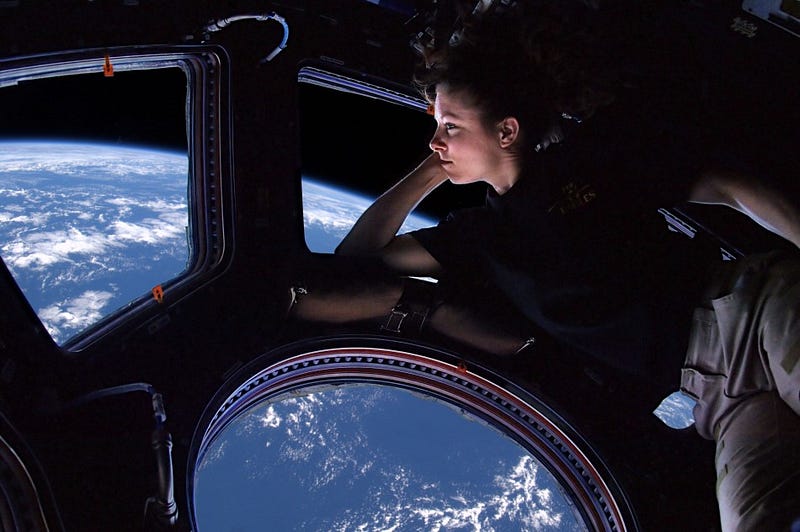
If this cupola-type structure in space looks familiar to you, that’s because you may have seen something very much like it, long ago, in a galaxy far, far away.
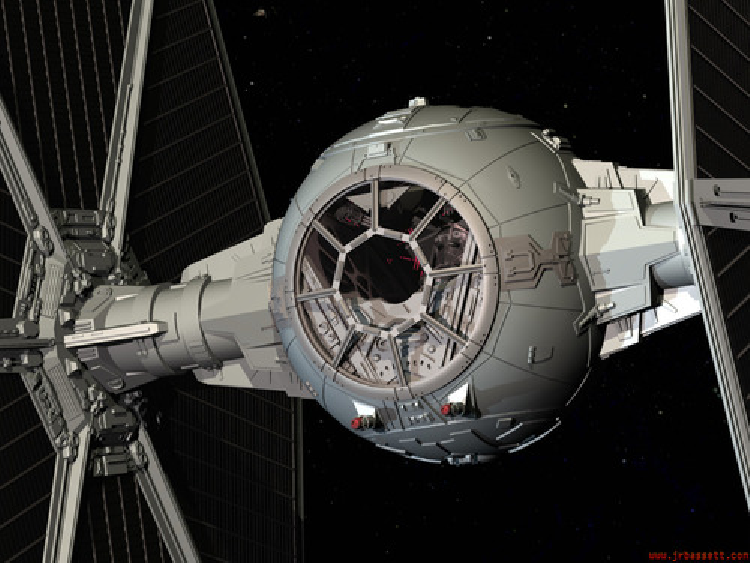
But let’s return to the reality of what’s actually supporting humans beyond the surface of the Earth. Like practically every one of Earth’s satellites, the International Space Station makes a nearly perfect, circular orbit just a few hundred kilometers above our surface. Since it’s in low-Earth orbit, it zips around the Earth — a journey exceeding 25,000 miles (40,000 km) — in just under 90 minutes.
It needs to move at that breakneck speed of 4.6 miles-per-second (7.5 km-per-hour); by the law of gravitation, that’s the only speed that will keep a satellite moving in a circular orbit just a small distance above the surface of the Earth!
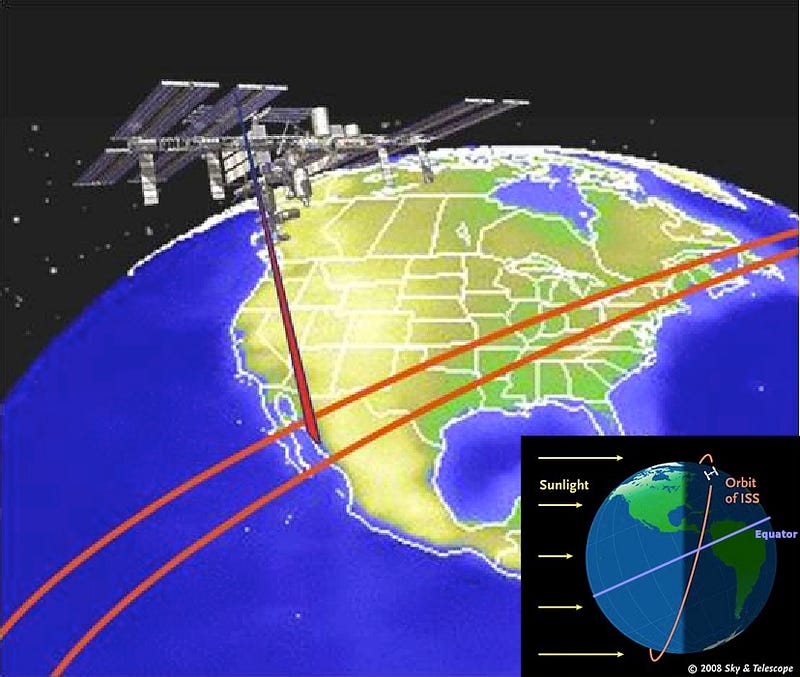
But this isn’t the only motion happening; while this is going on, the Earth is rotating beneath you, with a 24 hour period!
You’ve got a few options as to how you’d orient your spacecraft, which informs the star trails you would (or wouldn’t) see. One option — and this is what the Hubble Space Telescope does, for example — is to totally ignore the Earth. Have your spacecraft not rotate at all, point it at a target away from the Sun, one where the Earth will never get in your way, and observe it for as long as you like. Run your satellite like that, and, like Hubble, you’ll never see a star trail.
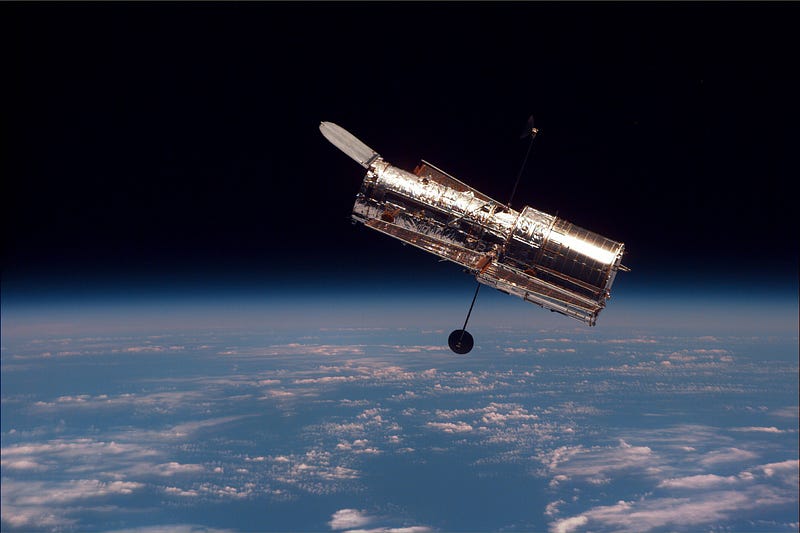
But the ISS wasn’t built for looking out into space, it was built for looking down at the Earth.
And if you look down, from the ISS, what would you be looking down at?

Every ninety minutes, you’d pass from the equator up to the northern latitudes, then all the way down, through the equator and down towards (but not quite flying over) Antarctica, and then back north again towards the equator. Because of the Earth’s rotation, the longitude of the locations you passing over changes by about 20° every time the ISS passes.
Because the ISS is designed to look down, rather than — like Hubble — not rotating at all, it rotates once every ninety minutes, so that the cupola I showed you earlier always points directly down at the Earth. Which means, if you stuck a camera in the cupola, you’d be able to see something akin to what Alex Rivest has stitched together, below.
https://www.youtube.com/watch?v=TOQrx-7qgak#t=16
As you can see, the stars do, in fact, appear to rotate! This is undeniable, but you’ve got to wonder as to why this is.
As it turns out, it’s entirely because of how the ISS rotates in space! Unlike the star trails on Earth, which would take 24 hours to make a complete circle, the trails on the ISS would make a complete loop in a mere 90 minutes, because that’s the period of rotation of the ISS around the Earth. (Just like the period of the Moon around the Earth — both the rotational period and the revolutionary period — is one lunar month.) This isn’t because the ISS it tidally locked to the Earth, but rather by design; it allows the ISS’s cupola to always point at the Earth’s surface. This is perfect for studying our own planet from space, which is one of the prime science objectives of the space station.
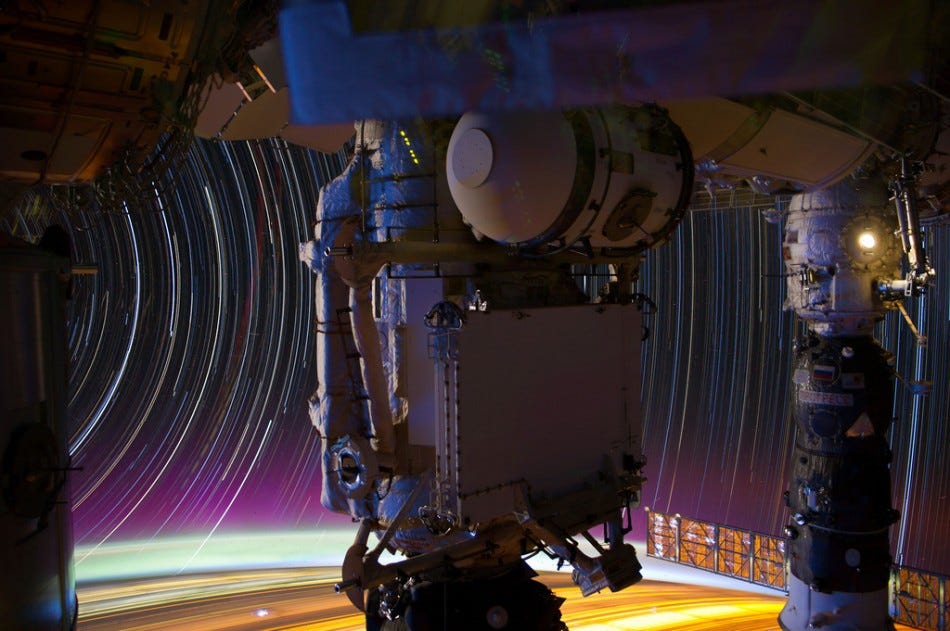
And yet, it’s only very recently that we’ve obtained the photos that showcase exactly what this phenomenon looks like. Thanks to NASA astronaut and photographer extraordinaire, Expedition 31 flight engineer Don Pettit, we have a whole slew of image composites from in cupola of the International Space Station. Pettit took a series of short-exposure pictures and stacked them together to produce these fabulous views of star trails from the ISS.
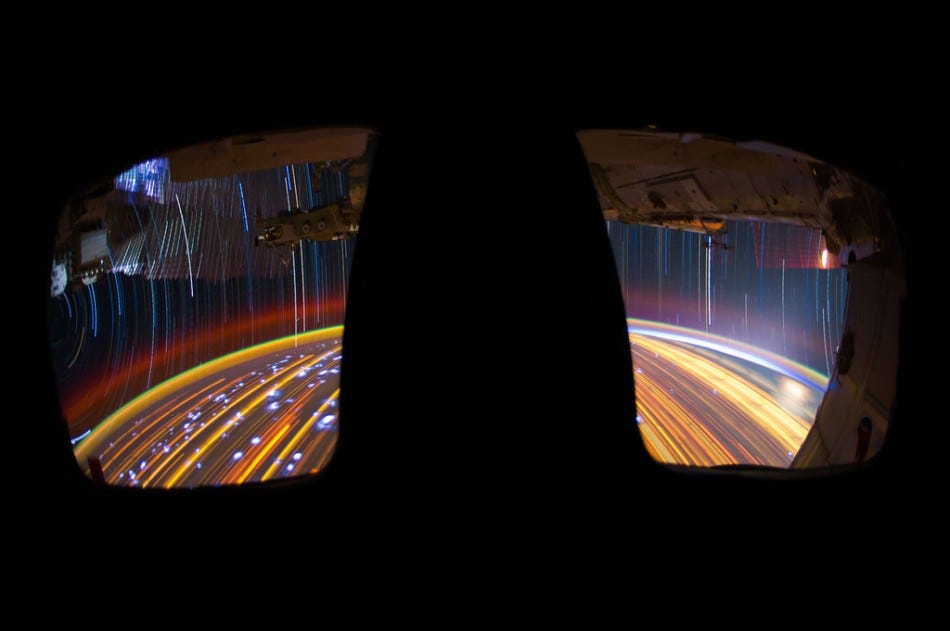
How did he do it? In his own words:
My star trail images are made by taking a time exposure of about 10 to 15 minutes. However, with modern digital cameras, 30 seconds is about the longest exposure possible, due to electronic detector noise effectively snowing out the image. To achieve the longer exposures I do what many amateur astronomers do. I take multiple 30-second exposures, then ‘stack’ them using imaging software, thus producing the longer exposure.
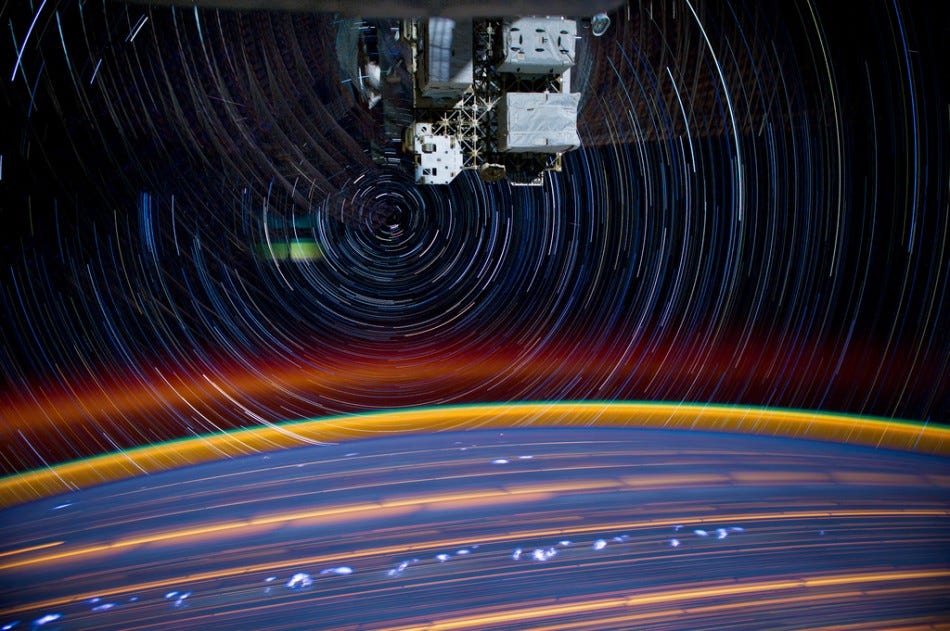
Unlike on Earth, the International Space Station’s star trails don’t have their trails centered on either the North or South Celestial Poles. There’s a good reason for this: the ISS doesn’t rotate with the Earth, it rotates so that it always points down at the Earth! Therefore, the points that appear to be stationary are the ones along the ISS’s axis-of-rotation, which is not only very rapid, but precesses 360° throughout the course of a year!
In each composite photo, though, in addition to the stars and the star trails, there are some remarkable things we can observe about our own planet, simply by looking at the Earth!
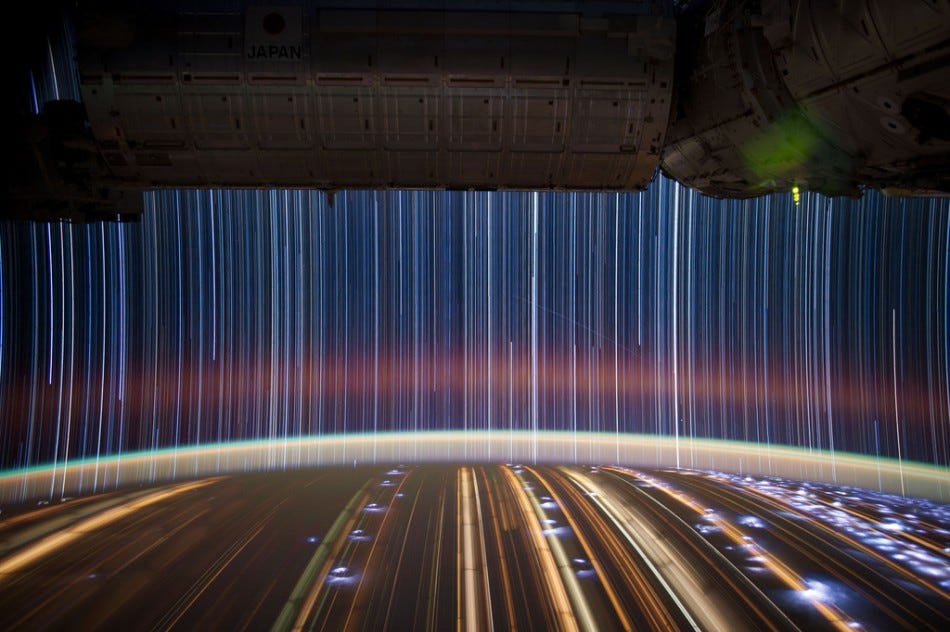
Above, for example, you can see the greenish airglow of the atmosphere, as well as the yellow streaks of passing cities and blue speckles — which, believe it or not, are lightning strikes — dotting the image.
The stars appear like rain, thanks to a narrow-angle photograph parallel to the International Space Station’s direction of motion. This effect begins to disappear as you move out to the sides, where the rotation effects of the ISS start to become visible.
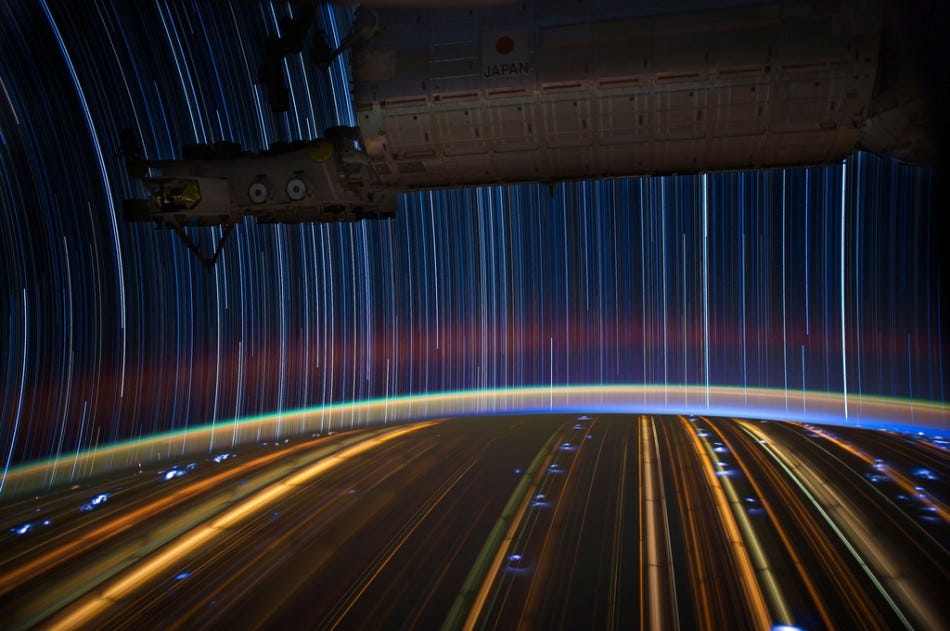
There’s also, at much higher altitudes above Earth, a much fainter airglow that comes in a dim, red color. That’s due to oxygen atoms very high up slowly de-exciting over the course of the night. While the bright, thin green layer is from a layer of air 90-100 km in altitude, the red layer is from 150-300 km up, nearly as high as the station itself!
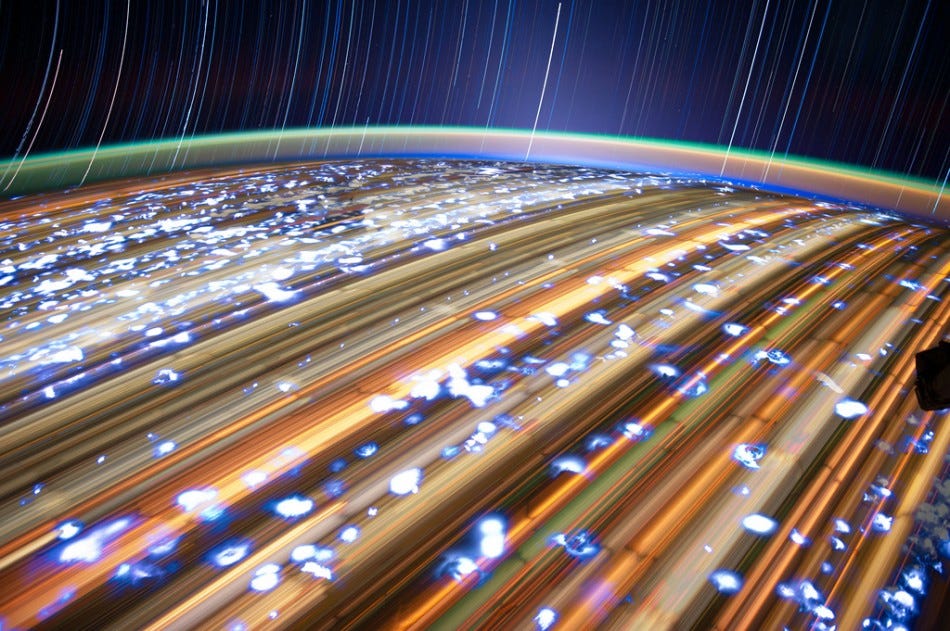
And what about the above image, with a remarkable number of blue speckles? As you may have guessed, that’s a passing thunderstorm, producing spectacular results in this time-lapse photo, with every single blue speckle representing a lightning bolt. As the satellite speeds across the Earth, the location of the thunderstorm (and the city lights) moves rapidly across the photo frame, producing streaks of continuous light dotted with intermittent lightning strikes!

Over a calm region, you’ll see a much more serene composition. The “blur” you see in the upper-middle of the image, above the faint, red airglow? That’s because the solar panels, necessary for powering the station, move and adjust as the ISS is in orbit, in order to maximize the power they receive from the Sun.

And while the stars may be dim, one object in the sky still appears incredibly bright: the Moon, prominently visible above. Note how, without the Earth’s atmosphere to refract and disperse the intense amount of light coming from it, there is no light pollution in the other parts of the sky resulting from the Moon! This showcases yet one more advantage of doing astronomy from space.
And finally, an example to show you that not even Don’s amazing photography and photo-stacking is flawless; even his star-trails sometimes suffer from imperfections!
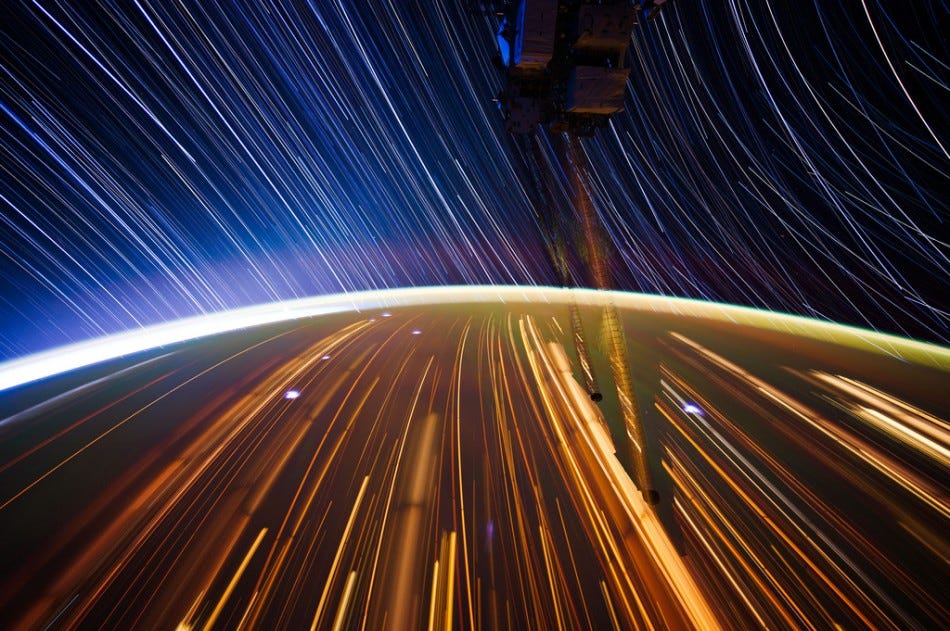
There are two conceivable reasons for this: one is that the ISS sometimes makes adjustments to its rotation, and the other is that the camera could have changed its orientation slightly in between snapshots.
All told, Don has created 26 of these image composites, viewable on NASA’s flickr photostream. These trails are different yet similar to the ones taken on Earth, and now you know the science behind it, as well as what you’re looking at.
Happy Throwback Thursday; especially if you missed these images when they were first released, go forth and enjoy them all!
Enjoyed what you read here? Head on over to the Starts With A Bang forum at Scienceblogs, join the conversation and drop us a line!





